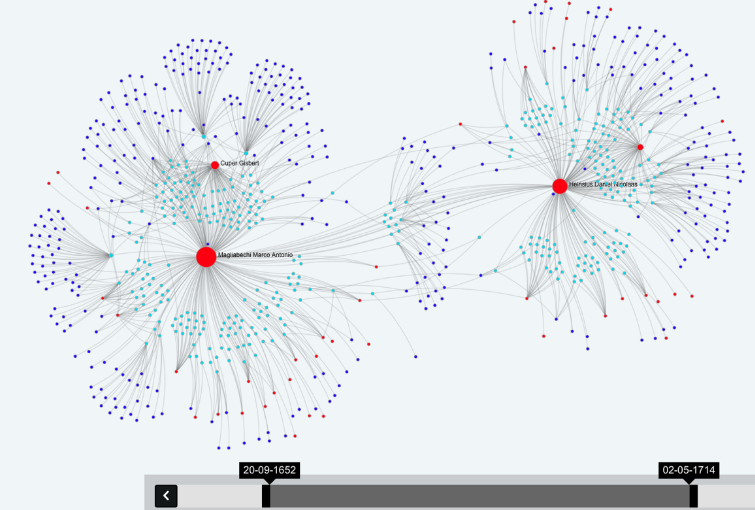Using Multi-Layered Networks to Disclose Books in the Republic of Letters
Keywords:
Data Exploration, Republic of Letters, Circulation of Knowledge, Multi-layered Networks, Visualizing BooksAbstract
This paper highlights the importance of books as dynamic actors within the Republic of Letters by means of multi-layered visualizations of epistolary networks. In the past decade, it has become increasingly common to make use of networks to study shifts in early modern scholarly exchange. Originally, almost all of these studies employed a single-layered network where one node of the graph represents a correspondent, and an edge between a pair of nodes corresponds to a letter exchanged between them. However, reducing the complex society of the Republic of Letters to a network in which actors are connected by one single type suggests a static uniformity that barely takes into account the multi-faced dynamics of epistolary exchange. In addition to letters, the Republic of Letters was tied (and untied) together primarily by means of books: they could foster networks when given as gifts, as well as influence and endanger connections if enlisted on the Index Librorum Prohibitorum. Therefore, this paper intends to discuss an approach that integrates both letters and books in a unified, dynamic multi-layered network representation. To this end, the epistolary network of the Dutch philologist Nicolaas Heinsius (1620-1680) with the Florentine Medici court serves as a case study to illustrate the applicability of multi-layered networks in correspondence research.

Downloads
Published
How to Cite
Issue
Section
License
A Creative Commons Attribution-NoDerivatives 4.0 (CC BY-ND 4.0) license applies to all contents published in JHNR. While articles published on JHNR can be copied by anyone for noncommercial purposes if proper credit is given, all materials are published under an open-access license with authors retaining full and permanent ownership of their work. For details please consult the Open Access and Copyright Notice.

